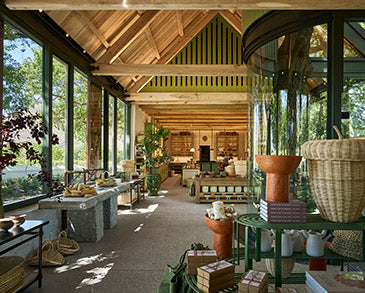
Watermelon is one of the delights of summer. When served chilled, it is refreshing, sweet and juicy and a popular fruit to eat on its own or to use as an ingredient. No surprise then that the Pierneef à La Motte summer menu features this popular fruit in a variety of ways - as a starter, main and dessert!
Perfect as a summer starter, a Watermelon and pickled ginger cold soup combines freshness with the interesting textures and flavours of a savoury pecan and cardamom scented crumble and a double cream yoghurt sorbet. With the main of Slow-cooked guinea fowl, compressed watermelon beautifully complements butternut and a sour fig glaze. The ever-so-pretty dessert called "Jam" is a playful interpretation of South African's love for jams and conserve, incorporating a creamy white chocolate and pecan nut mousse with a delicate pink ombre cake and refreshing watermelon sorbet.
The traditions of Cape Winelands Cuisine often entail the use of fruit in savoury dishes, but historically the watermelon was not even regarded as a fruit. Deriving from ancestors that were rather bitter with more white flesh, the Citrullus could more fittingly be categorised and was used as a vegetable.
Of African origin, each of the seven species in the genus is native to another African region. According to research, it is only through cultivation that the sweeter style with more red flesh was obtained. A detailed study into the development of the dessert-type watermelon of today, was done by Harry Paris in Emerge of the Sweet Dessert Watermelon, Citrullus lanatus, in Mediterranean Lands During the Roman Era. Paris concludes that although the watermelon was familiar in ancient Egyptian civilizations with drawings in tombs of the Pharaoh's, for instance, there was not evidence of them being sweet as we know them today.
Through a meticulous multidisciplinary approach, he concludes that "...watermelons of the latter half of the second century in Israel, like figs, table grapes and pomegranates, were common fruits that were eaten raw without any culinary preparation and, like them, were juicy and sweet." "Sweet dessert watermelons were selected from non-sweet ancestors. By the time of the roman Empire, sweet dessert watermelons were a familiar and esteemed produce item in Israel, and probably in other Mediterranean lands as well."
Somewhat of a food tradition during the warm South African summers, watermelon is also one of the food trends for 2018, although not necessarily in its normal sweet and juicy way. Following on the 2017 watermelon water trend, Whole Foods predicts that the root to stem movement will see us eating pickled watermelon rinds in 2018!












